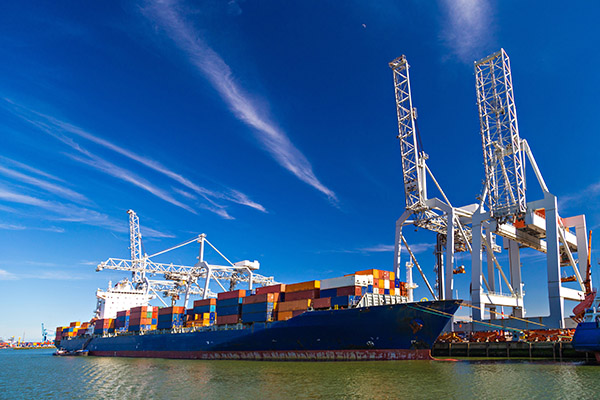POLA and POLB volumes are mixed in July
July volumes at the Port of Los Angeles (POLA) and the Port of Long Beach (POLB) were mixed, according to data recently released by the ports.
July volumes at the Port of Los Angeles (POLA) and the Port of Long Beach (POLB) were mixed, according to data recently released by the ports.
POLB reported that total monthly volume, at 688,457 (TEU) Twenty-Foot Equivalent Units, was off 4.4% annually, compared to July 2017, which at that point was an all-time monthly high for the port but has since been eclipsed by the 752,188 TEU recorded in June 2018.
POLB officials cited various factors for the annual decline, including shipping alliances’ decisions in July to shift vessel deployment and port calls. And they also expressed concerns about escalating tariffs potentially slowing trade activity over the course of the remainder of the year, which, to date, is the busiest on record over the port’s 107 years of operations.
July POLB imports were off 8.2% annually at 347,736 TEU, and exports were off 5% to 119,747 TEU. Empty containers, at 220,975 TEU, rose 2.6%.
Despite these declines, POLB said it in on track for its highest-volume year on record, with 2017 as the current all-time high. On a year-to-date basis through July, POLB volumes are up 11.3% at 4.6 million TEU.
POLA volume shines: POLA officials heralded the best July in the port’s history, with 833,568 TEU, which was up 4.6% annually, topping July 2017, which was the previous July high. What’s more, July 2018 marked the fourth highest-volume month in the port’s history.
Imports at the port were up 5% at 438,165 TEU, and exports rose 8.4% to 167,992 TEU, with empties rising 1.2% to 227,412 TEU. On a year-to-date basis, POLA volumes are off 2.6%.
“With a robust economy and cargo owners moving goods ahead of expected tariffs, our terminal operators, labor force and supply chain partners seamlessly moved a record amount of cargo across our docks,” said Port of Los Angeles Executive Director Gene Seroka in a statement. “That speaks to the efficiency, speed, reliability and service that are the hallmarks of the Port of Los Angeles.”
In a recent interview, POLA Director of Media Relations Phillip Sanfield said on one hand, the economy has been robust and imports have been strong, not only in San Pedro Bay but around the country.
“[But] on the other hand, we have got these tariffs that are in different stages…either looming or some already imposed or retaliatory ones being considered. That provides a level of uncertainty. The global supply chain thrives on certainty. We are cautious about the second half. It really depends on how these tariffs take hold. Gene Seroka has said that in looking at the numbers to date we are estimating at least 15% of port cargo volumes would be exposed to the tariffs that are either in place or are part of the $200 billion that are being discussed in the weeks ahead along with the retaliatory measures. When we say ‘exposed,’ that does not mean they would go away…it means those products going through our docks would be tariffed both for inbound and outbound containers. How that affects cargo, whether retailers or consumers back off and slow orders, or if tariffs are passed along, remains to be seen and is a concern.”
Sanfield said POLA has been stressing that half of U.S. imports go to U.S. manufacturers to be processed, so it does not represent all finished products. And he added that POLA would like to see negotiations at the highest levels to commence immediately with all nations impacted by tariff actions involved.
“We believe negotiation is the best pathway to resolving these issues, and we want a fair and level playing field for U.S. businesses competing in the global economy and want to see negotiations commence to resolve these issues,” he said. “The longer it goes on, the more uncertainty it creates in the marketplace.”
Todd Fowler, analyst for KeyBanc Capital Markets, wrote in a research note that July sequential trends for POLA and POLB were slightly below seasonal variations and down year-over-year, largely attributable to comparisons.
“June was stronger than expected on the heels of economic strength and lean inventories, as well as some potential inventory pull-forward around trade discord (though also cited as helping July), with Long Beach impacted by a shift in vessel calls during July,” he wrote. “With respect to the prior year, July 2017 was notably stronger as restocking began to take hold in earnest after a slower start to the year. Looking ahead, we expect volumes to peak seasonally in August, but to potentially remain elevated year-over-year as comparisons normalize and considering lean inventories and stable consumer end markets, partially balanced by trade uncertainty.”













